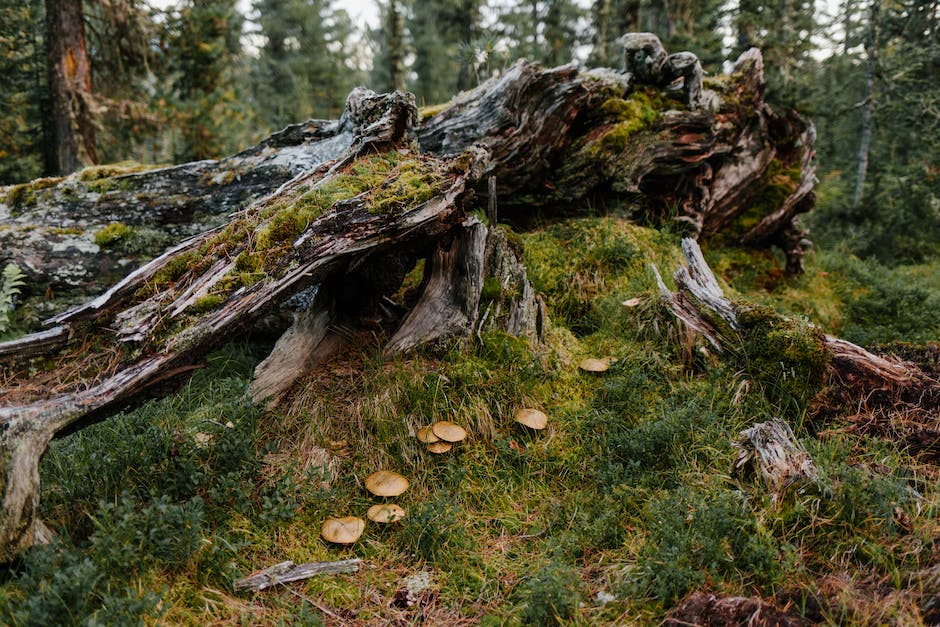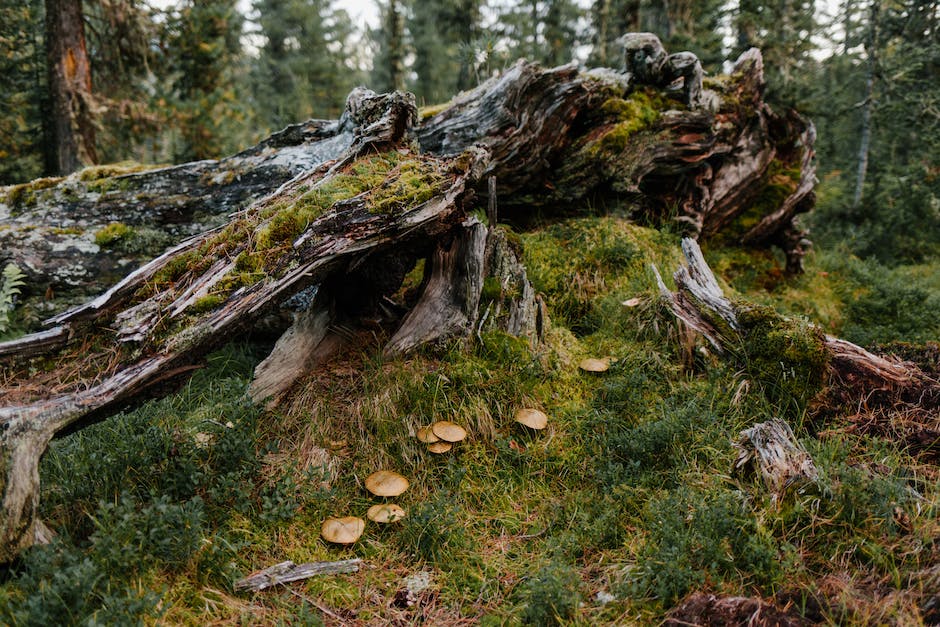The bark of an apple tree can split for a variety of reasons, including damage from pests, harsh weather conditions, and disease. Splitting bark can also be a sign of poor cultural practices, such as improper pruning or irrigation. Though bark splitting is often unsightly, it is usually not fatal to the tree.
There are several reasons why apple tree bark might split. One possibility is that the tree was damaged during the winter, causing the bark to crack. Another possibility is that the tree is not getting enough water, causing the bark to dry out and crack. Finally, a fungal disease called canker can cause the bark to split.
Why is my apple trees bark splitting?
Sloughing or peeling of the bark is a normal process, especially in the spring when the tree begins to grow. This is more noticeable in some species than in others. The outer layers of bark are dead tissue and cannot grow, so the outer bark must split in order for the tree to grow in diameter.
It’s important to take care of damaged areas of bark or limbs on trees, as this can help the tree to heal more quickly. Trimming the wound lightly (tracing the injury with a sharp knife) can help the tree to compartmentalize the exposed area, and wrapping the damaged area with a light-colored tree wrap can also help.
Can a tree survive with split bark
Bark splits can be unsightly and may provide an entry point for disease organisms, but they are not typically fatal to trees. The tree will usually start the process of callusing (or healing) on its own, but there are some things you can do to encourage this process. First, make sure the tree is well-watered. Then, apply a wound dressing to the affected area. This will help to keep the area clean and protected while the tree heals. Finally, avoid any further injury to the tree, as this can delay or prevent the callusing process.
If you’re not sure whether a tree is safe, it’s best to err on the side of caution and get professional help. Trying to do it all yourself could put you and your property at risk.
How do you fix a split apple tree?
If the split is small, you can repair it by boring a hole through the trunk or branch at a place above the split. Insert a screw rod until the point is through the opposite side. Tighten with nuts and washers to secure the split. If the split is long, insert as many screw rods as necessary, 12 to 18 inches apart.
The damage to a tree depends on how much of the circumference is affected. If only a quarter of the bark is removed, the tree is likely to survive. However, if more than half the bark is removed, the tree is likely to die. If all the bark is removed, the tree will most likely die.
Can a split tree heal itself?
If you have a minor split on a branch that is not hanging or otherwise deformed, it should heal on its own. These are like small paper cuts that will be better before you know it! If the split looks like a gash and is still connected to an unharmed branch, Smooth the bark out to help the healing process.
If fresh wounds occur on the trunk, the injured bark should be removed carefully, leaving healthy bark that is sound and tight to the wood A wound dressing (tree paint) is not necessary.
Can a tree survive being split
When a tree breaks in half, it does not mean that the tree will die. The tree will quickly develop roots and leaves to compensate for the lost nutrients. The foundation can get firmer, and the foliage will bloom faster to hasten the recovery process.
Tree bark can split from cold temperatures following excessive sun and heat. This is because the bark expands in the heat and contracts in the cold, causing it to crack. This is most common in young trees with thin bark, such as dogwoods, elms, maples, cherries, apples, peaches, and plums.
How do you treat a split tree trunk?
The best way to repair a broken tree trunk is by bracing or cabling it to provide much-needed support. If the attachment area is thicker, the tree can still share nutrients and heal. It is, however, critical to contact an arborist to get the best advice depending on the extent of the damage.
If you see a tree with peeling bark, it’s a good indicator that the tree is either dead or dying. This is because the tree is shedding its bark in order to conserve energy, and it’s also a sign that the tree is not getting enough nutrients. Even if the tree isn’t dead yet, it’s likely headed in that direction.
What does a crack in a tree trunk mean
Cracks in tree trunks can be one of the major indicators of an unstable tree. Most cracks are caused by improper closure of wounds or by the splitting of weak branch unions. They can be found in branches, stems or roots, and vary in type and severity. Care should be taken when assessing a tree with cracks, as some may be more serious than others. If you are unsure, it is always best to consult with a certified arborist.
A tree fork is a bifurcation in the trunk of a tree giving rise to two roughly equal diameter branches. In other words, it’s a fork in the road for a tree! This usually occurs when the tree is damaged or stressed in some way, causing it to split. While this may seem like a bad thing, it’s actually a natural way for the tree to adapt and continue growing.
What does it mean when a tree splits in half?
Frost cracks often happen when there are sudden changes in temperature, especially when it gets cold after a warm spell. These cracks can be vertical or horizontal and can run deep into the tree trunk. They are a major concern because they weaken the tree and can lead to disease and insect infestation. Proper tree care can help prevent frost cracks, so be sure to protect your trees from extreme weather conditions.
This is the best time to prune your trees as they are dormant and won’t bleed sap excessively. You can prune after leaf fall and before bud burst, which is usually between November and early March.
How do you nurse an apple tree back to health
It is important to control insects and disease in order to enjoy the beauty and fruit of this tree for years. Fungicide applications during the early spring and summer are essential to prevent disease and produce healthy, high quality fruit.
If you see brown spots on the flower ends of the fruit, it is the first sign of infection. These spots will grow into concentric circles and rot the fruit. The tree’s leaves may develop small holes or purplish brown spots that look like a frog’s eyes.
What is the lifespan of a common apple tree
The average healthy and well cared apple tree can live from 50 to 80 years. However, there are striking exceptions to this rule. Some apple trees have been reported to live for more than a century. An apple tree rarely produces many fruits after its 50th year of age.
If you notice tree bark damage, it’s important to take steps to keep the tree healthy. Mulching and supplemental watering during drought conditions can help. You can also trace the wound with a wood file and sharp knife, removing any loose bark to create a clean wound. Finally, take black plastic and attach it to the tree wound, just past the wound edge, using small, ¼” staples from a staple gun.
Should I wrap a damaged tree trunk
When a tree is wounded, it is best to allow the wound to heal naturally. thus, wound dressings are not necessary and can even be detrimental to the tree. Paint or tar used as wound dressings can prohibit the tree’s natural compartmentalization and prevent drying. Such wound dressings also can encourage fungal growth and act as food sources for pathogens.
Trees play an important role in our ecosystem and their bark is essential to their health. Just like our skin, bark protects a tree’s inner layers from disease and insects. If bark is removed, it can expose the tree to serious problems. While a tree can heal around the wound, it will not be able to grow back bark over a large area. This highlight the importance of taking care of our trees and not damaging their bark.
What do you put on a tree that has split
A split in a tree can be a serious problem, as it can cause the tree toBecome unstable and even collapse. To fix a splitting tree, we apply structural support in the form of cabling or bracing. This hackberry split about 7′ up from the ground and we are drilling two holes through the trunk so we can install threaded rods to hold the split together. This will provide the necessary support to keep the tree safe and stable.
Frost is just one of the causes of tree bark cracking. You’ll also see cracking tree trunks from a condition called sunscald. In late winter or early spring, warm afternoon sun shining on the trunk can cause the tree tissue to break dormancy. When sunny afternoons are followed by freezing nights, the tissue dies.
Final Words
The exact cause of why apple tree bark splits is still unknown, but there are a few possible explanations. One theory is that it is caused by the tree’s reaction to injuries, such as being grazed by an animal or damaged by a lawnmower. Another possibility is that it is caused by a fungal infection or disease. Finally, it could also be due to extreme weather conditions, such as a sudden drop in temperature or prolonged exposure to cold temperatures.
Apple trees are growing in popularity due to the health benefits of the fruit, but many people don’t know that the bark of the tree can also be used for medicinal purposes. The bark is rich in tannins, which are known to have astringent and anti-inflammatory properties. Tannins are also used in the tanning of leather and in the production of ink and dyes. When the bark is harvested, it is carefully stripped from the tree so as not to damage the tree. The bark is then dried and ground into a powder, which can be used in teas, capsules, or tinctures.
Jackson Hill is a passionate arborist with years of experience in the field of trees. He developed his fascination with trees at a young age, spending countless hours exploring the forests and climbing trees. Jackson went on to study arboriculture and horticulture at Michigan State University and later earned a degree in forestry from the University of Michigan.
With his extensive knowledge and expertise, Jackson has become a trusted authority on trees and their impact on the environment. His work has helped shape the field of arboriculture and he continues to be a leading voice in the industry.
